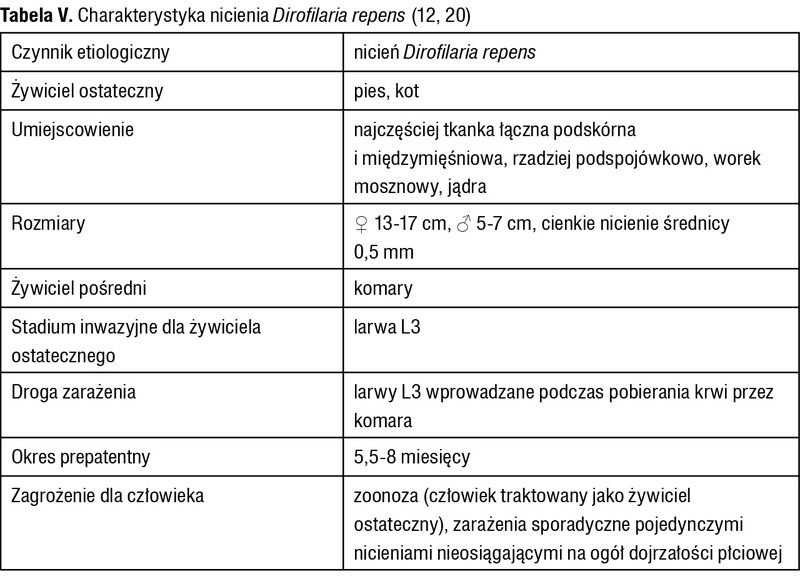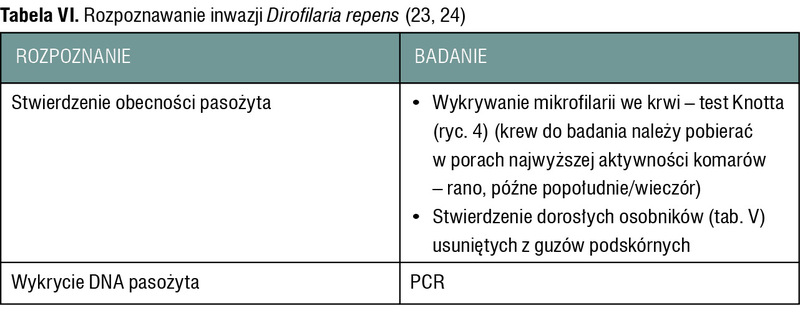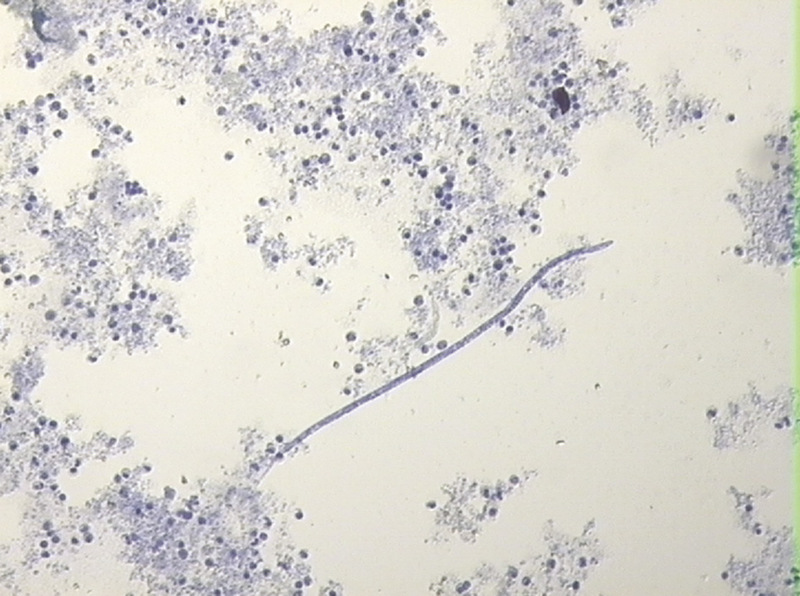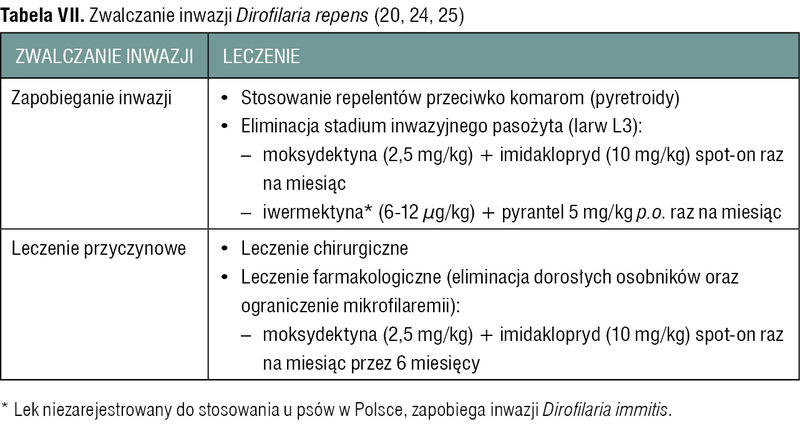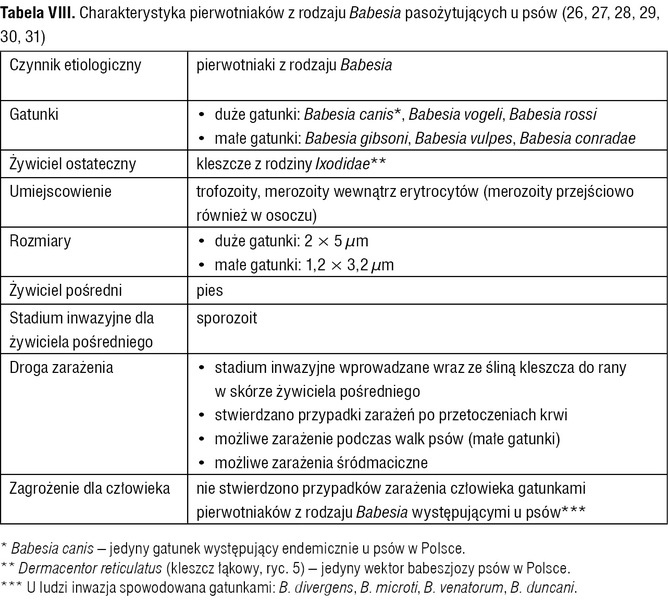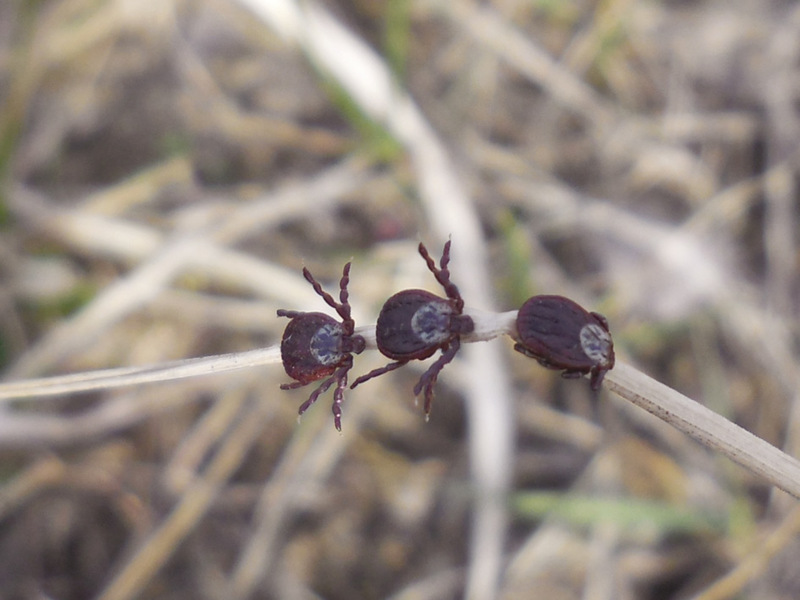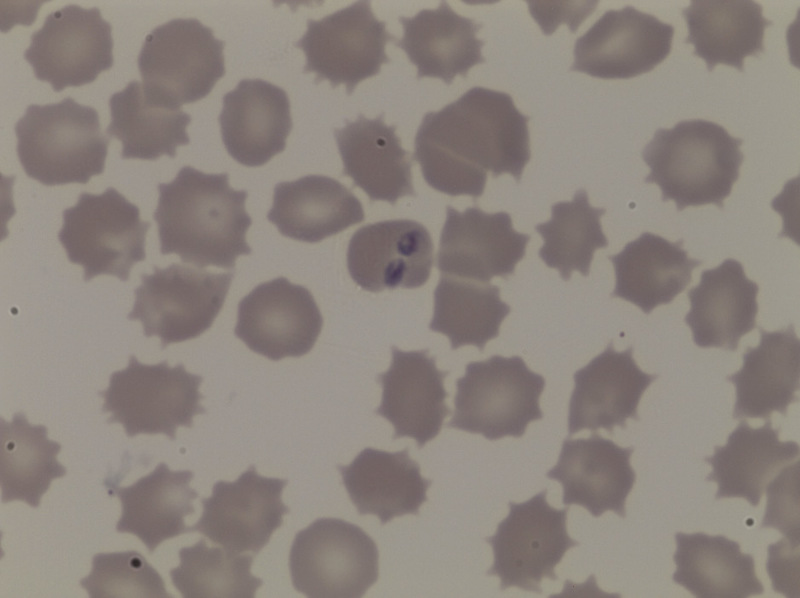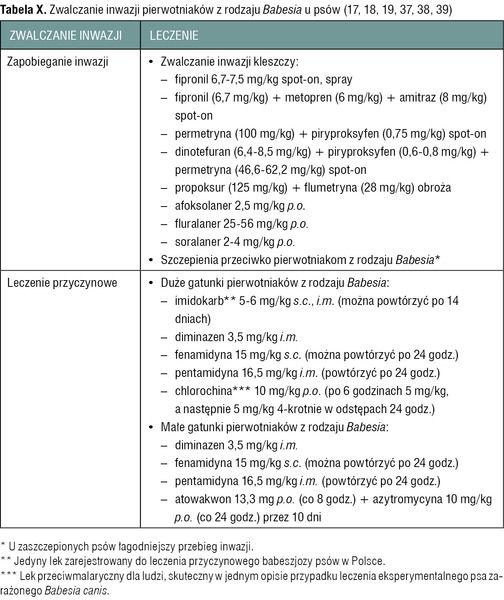Ryc. 1-4, 6 – W. Zygner, ryc. 5 – P. Górski
PIŚMIENNICTWO
1. Siuda K.: Stawonogi a choroby transmisyjne. W: Parazytologia i akaroentomologia medyczna. Deryło A. (red.), Wydawnictwo Naukowe PWN, Warszawa, 2002, s. 423-444.
2. Demiaszkiewicz A.W., Polańczyk G., Osińska B., Pyziel A.M., Kuligowska I., Lachowicz J., Sikorski A.: The prevalence and distribution of Dirofilaria repens in dogs in the Mazovian Province of central-eastern Poland. Annals of Agricultural and Environmental Medicine, 2014, 21, 701-704.
3. Tylkowska A., Pilarczyk B., Gregorczyk A., Templin E.: Gastrointestinal helminths of dogs in Western Pomerania, Poland. Wiadomości Parazytologiczne, 2010, 53, 269-276.
4. Zygner W., Górski P., Wędrychowicz H.: Detection of the DNA of Borrelia afzelii, Anaplasma phagocytophilum and Babesia canis in blood samples from dogs in Warsaw. Veterinary Record, 2009, 164, 465-467.
5. Felsmann M., Michalski M., Felsmann M., Sokół R., Szarek J., Strzyżewska-Worotyńska E.: Invasive forms of canine endoparasites as a potential threat to public health – A review and own studies. Annals of Agricultural and Environmental Medicine, 2017, 24, 245-249.
6. Bajer A., Rodo A., Mierzejewska E.J., Tołkacz K., Welc-Faleciak R.: The prevalence of Dirofilaria repens in cats, healthy dogs and dogs with concurrent babesiosis in an expansion zone in central Europe. BMC Veterinary Research, 2016, 12, 183.
7. Zygner W., Jaros S., Wędrychowicz H.: Prevalence of Babesia canis, Borrelia afzelii, and Anaplasma phagocytophilum infection in hard ticks removed from dogs in Warsaw (central Poland). Veterinary Parasitology, 2008, 153, 139-142.
8. Welc-Falęciak R., Rodo A., Siński E., Bajer A.: Babesia canis and other tick-borne infections in dogs in Central Poland. Veterinary Parasitology, 2009, 166, 191-198.
9. Adaszek Ł., Martinez A.C., Winiarczyk S.: The factors affecting the distribution of babesiosis in dogs in Poland. Veterinary Parasitology, 2011, 181, 160-165.
10. Masny A., Lewin T., Salamatin R., Golab E.: The first report on detection of canine Acantocheilonema reconditum in Poland and the associated diagnostic problems. Polish Journal of Veterinary Sciences, 2011, 14, 485-487.
11. Sołtysiak Z., Frydrychowski P., Noszczyk-Nowak A.: Filariozy zwierząt i ludzi. Magazyn Weterynaryjny, 2017, ZE 6, 14-26.
12. Taylor M.A., Coop R.L., Wall R.L.: Veterinary Parasitology. 3rd ed. Blackwell Publishing, Ames, Iowa 2007.
13. Bowman D.D.: Georgis’ Parasitology for Veterinarians. 9th ed. Saunders Elsevier, St. Louis, Missouri 2009.
14. Zygner W.: Problematyczna diagnostyka i zwalczanie inwazji Dipylidium caninum u psów i kotów. Magazyn Weterynaryjny, 2012, 21 (179), 334-337.
15. Zajac A.M., Conboy G.A.: Veterinary Clinical Parasitology. 7th ed. Blackwell Publishing, Ames, Iowa 2006.
16. Plumb D.C.: Plumb’s Veterinary Drug Handbook. 6th ed. Blackwell Publishing, Ames, Iowa 2008.
17. ESCCAP. http://www.esccap.pl/datastore/download/na_ectoparasiticides.pdf, 2018.05.19.
18. Walther F.M., Allan M.J., Roepke R.K.A., Nuernberger M.C.: Safety of fluralaner chewable tablets (BravectoTM), a novel systemic antiparasitic drug, in dogs after oral administration. Parasites & Vectors, 2014, 7, 87.
19. Packianathan R., Colgan S., Hodge A., Davis K., Six R.H., Maeder S.: Efficacy and safety of sarolaner (Simparica®) in the treatment and control of naturally occurring flea infestations in dogs presented as veterinary patients in Australia. Parasites & Vectors, 2017, 10, 387.
20. Genchi C., Kramer L.: Subcutaneous dirofilariosis (Dirofilaria repens): an infection spreading throughout the old world. Parasites & Vectors 2017, 10 (Suppl 2), 517.
21. Tarello W.: Cutaneous lesions in dogs with Dirofilaria (Nochtiella) repens infestation and concurrent tick-borne transmitted diseases. Veterinary Dermatology, 2002, 13, 267-274.
22. Tarello W.: Dermatitis associated with Dirofilaria (Nochtiella) repens microfilariae in dogs from central Italy. Acta Veterinaria Hungarica, 2002, 50 (1), 63-78.
23. Sapierzyński R., Fabisiak M., Sałamaszyńska A.: Several cases of dirofilariosis accidentally diagnosed in dogs from Poland, including two PCR positive Dirofilaria repens cases. Polish Journal of Veterinary Sciences, 2010, 13, 545-547.
24. Zygner W., Sobków B.: Dirofilarioza podskórna psów i kotów – nowa zoonoza w Polsce. Weterynaria w Praktyce, 2012, 9 (3), 44-51.
25. Venco L., McCall J.W., Guerrero J., Genchi C.: Efficacy of long-term monthly administration of ivermectin on the progress of naturally acquired heartworm infections in dogs. Veterinary Parasitology, 2004, 124, 259-268.
26. Cannon S.H., Levy J.K., Kirk S.K., Crawford P.C., Leutenegger C.M., Shuster J.J., Liu J., Chandrashekar R.: Infectious diseases in dogs rescued during dogfighting investigations. Veterinary Journal, 2016, 211, 64-69.
27. Fukumoto S., Suzuki H., Igarashi I., Xuan X.: Fatal experimental transplacental Babesia gibsoni infections in dogs. International Journal for Parasitology, 2005, 35 (9), 1031-1035.
28. Irwin P.J.: Canine babesiosis: from molecular taxonomy to control. Parasites & Vectors, 2009, 2 (Suppl. 1), S4.
29. Jefferies R., Ryan U.M., Jardine J., Broughton D.K., Robertson I.D., Irwin P.J.: Blood, Bull Terriers and Babesiosis: further evidence for direct transmission of Babesia gibsoni in dogs. Australian Veterinary Journal, 2007, 85, 459-463.
30. Mierzejewska E.J., Welc-Falęciak R., Bednarska M., Rodo A., Bajer A.: The first evidence for vertical transmission of Babesia canis in a litter of Central Asian Shepherd dogs. Annals of Agricultural and Environmental Medicine, 2014, 21, 500-503.
31. Stegeman J.R., Birkenheuer A.J., Kruger J.M., Breitschwerdt E.B.: Transfusion-associated Babesia gibsoni infection in a dog. Journal of the American Veterinary Medical Association, 2003, 222, 959-963.
32. Adaszek Ł., Winiarczyk S., Skrzypczak M.: The clinical course of babesiosis in 76 dogs infected with protozoan parasites Babesia canis canis. Polish Journal of Veterinary Sciences, 2009, 12, 81-87.
33. Máthé A., Vörös K., Papp L., Reiczigel J.: Clinical manifestations of canine babesiosis in Hungary (63 cases). Acta Veterinaria Hungarica, 2006, 54, 367-385.
34. Matijatko V., Torti M., Schetters T.P.: Canine babesiosis in Europe: how many diseases? Trends in Parasitology, 2012, 28, 99-105.
35. Kirtz G., Leschnik M., Hooijberg E., Tichy A., Leidinger E.: In-clinic laboratory diagnosis of canine babesiosis (Babesia canis canis) for veterinary practitioners in Central Europe. Tierärztliche Praxis. Ausgabe K, Kleintiere/Heimtiere. 2012, 40, 87-94.
36. Zygner W., Sobków K.: Diagnostyka babeszjozy psów w praktyce. Życie Weterynaryjne, 2012, 87, 755-759.
37. Baneth G.: Antiprotozoal treatment of canine babesiosis. Veterinary Parasitology, 2018, 254, 58-63.
38. Irwin P.: Babesiosis and cytauxzoonosis. W: Arthropod-borne Infectious Diseases of the dog and cat. Shaw S.E., Day M.J. (red.), Manson Publishing, London, 2005, s. 63-77.
39. Solano-Gallego L., Sainz Á., Roura X., Estrada-Peña A., Miró G.: A review of canine babesiosis: the European perspective. Parasites & Vectors, 2016, 9, 336.

